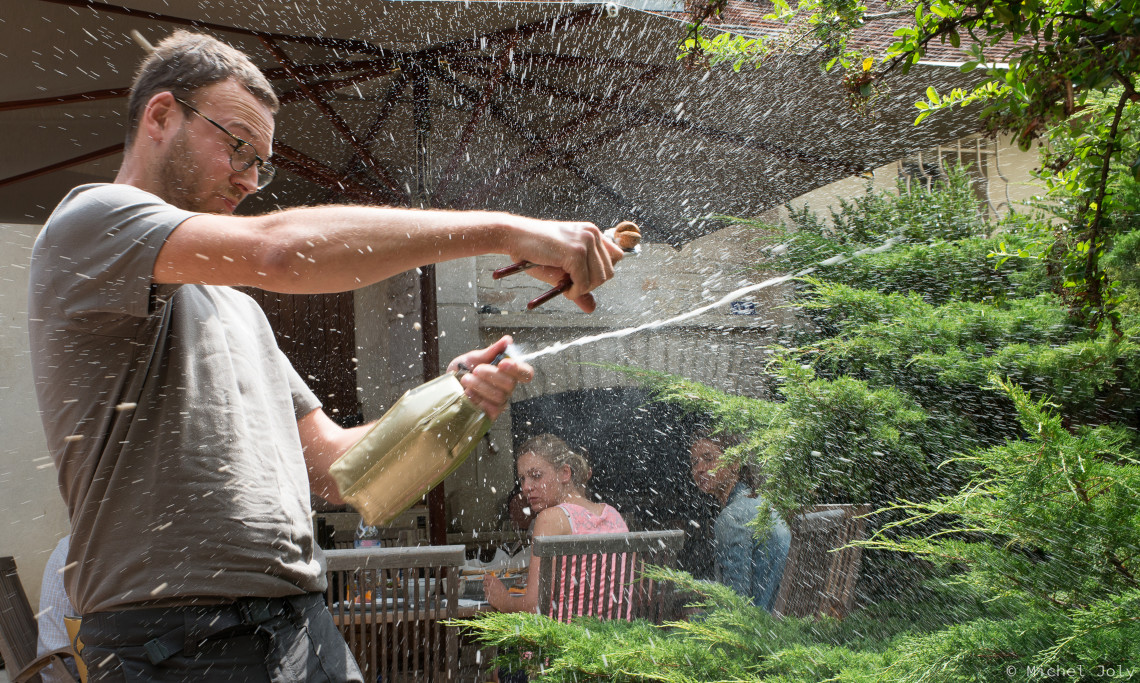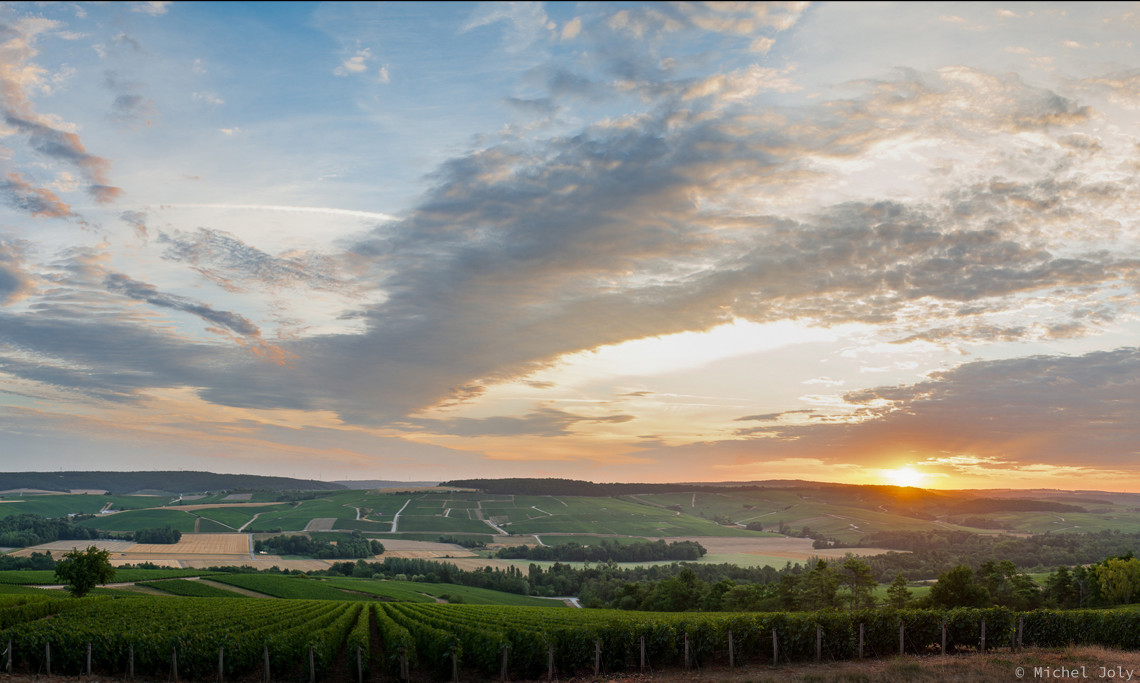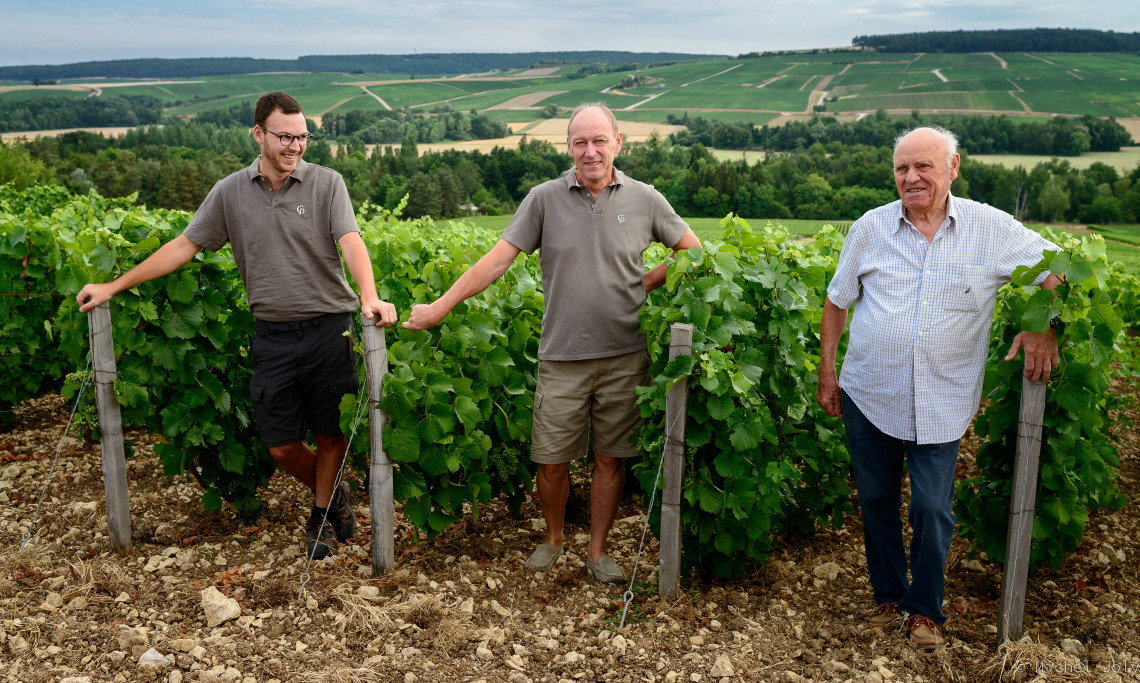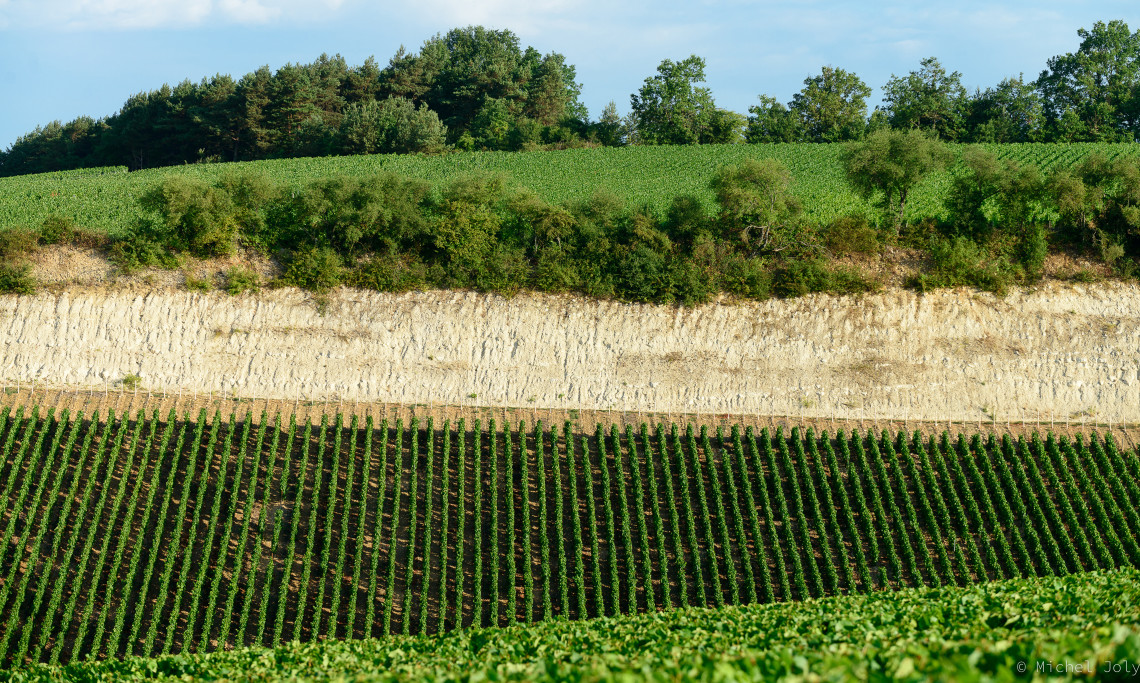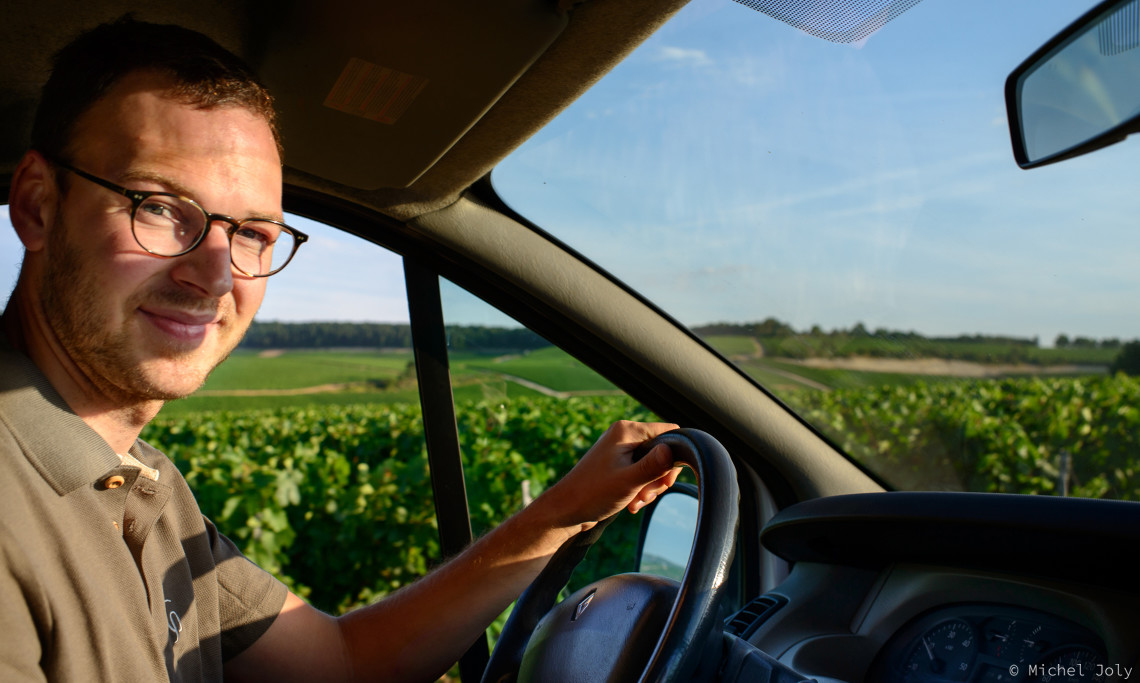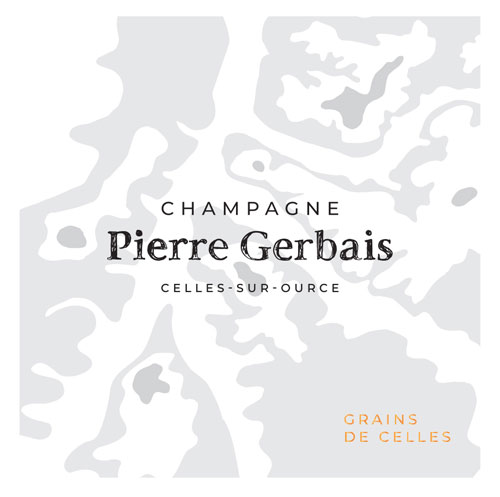Domaine Profile
- Location: Celles-sur-Ource, Aube, Champagne
- Size: 18 ha (44.48 ac)
- Varieties: Chardonnay, Pinot Noir, Pinot Blanc
- Viticulture: Certified sustainable (Ampelos, 1996) and Haute Valeur Environmentale. Limited yields, soils are worked mechanically, no chemical inputs. Hand-harvesting.
- Vinification: Hand harvested and sorted. Vinified and aged without added SO2. Primary fermentation and malolactic fermentation in tanks. Second fermentation with cultured organic yeast strains in bottles, aged for 30-36 months on lattes. Disgorged 6 months before commercialization. 25-30 ppm total SO2 at bottling.
At a Glance
Champagne Pierre Gerbais is a fourth generation domaine in the Aube. It is spearheaded today by Aurélien Gerbais, who is unnervingly self-assured for his age, yet soft-spoken and humble. At Gerbais, there are old vines, organic vineyard management, intelligence, respect, passion, relevance, training and drive enough to take this house to the very top of a small band of visionary champagne makers in the Aube who include Aurélien's friend and neighbor Cédric Bouchard, and the small houses of Marie Courtin, Jacques Lassaigne, Ulysse Collin, Horiot, Vouette et Sorbée, etc.
History, Geology, and Organic Vineyards
Many of the vineyards in the Aube were planted after WWII when a steep and sudden rise in champagne sales required an increase in the production of grapes. With vineyards, the Aubois found a modicum of affluence, and with the affluence, they found luxury trappings. Not Aurélien's grandfather, Pierre. He was so enamored with the terroir of Celles sur Ource that he just kept on buying vineyards. It is mostly thanks to him that the Gerbais family now owns 18 hectares, 10 hectares of Pinot Noir, 4 hectares of Chardonnay, and a rarity, 4 hectares of Pinot Blanc.
The winery and all the vineyards are located in Celles sur Ource, at the confluence of four valleys carved by the rivers Seine, Arce, Laigne and Ource. The Ource here runs its course from east to west, with vineyards located on both of its banks. Locals call the northern bank the endroit, the good side, because it faces south, and they call the southern bank the envers, the wrong side, because it faces north. The geology of the vineyards in the Aube is unlike that of northern Champagne, however, it is very much like Burgundy's. In his book Terroir, James E. Wilson calls the Aube a “charter member of the Kimmeridgian chain” and in Celles, on the endroit, there is also a band of clay and limestone similar to that found in the Côte d'Or.
In the nineties, the domaine went organic. “Once you see the influence of chemicals....” Aurélien's voice trails off before resuming with the story of his grandmother who almost died from an infection due to pesticides and fungicides. A tireless vineyard worker, she had developed Stakhanovite habits. To save time while she raised the vines' foliage, she would take trellis wire ties from her apron two at a time. Placing one for safekeeping between her lips she would secure the wires with the other, then move a few feet down the row and secure the wires again with the tie that she kept in her mouth. When her fingers touched the wires and branches, they were also gathering residues of pesticides and fungicides, therefore, when she put the trellis ties between her lips she was, in effect, feeding herself poison.
After this near fatal tragedy, the domaine immediately converted to organic vineyard management. Ironically, when they did, Aurélien's grandmother was not pleased. She fussed about the added work and she fussed about the vineyards looking unkempt with all that grass. Grandma notwithstanding, the Gerbais obtained the Ampelos certification in 1996.
I had never heard about Ampelos prior to visiting Gerbais. As far as I know, it is favored by a group of champagne growers that also includes Laurent Champs of Vilmart. And as far as I understand it, Ampelos is organic but for one loophole, one shock chemical treatment, but one per year only, and only if necessary to save the entire crop. Perhaps it is more accurate then not to describe Ampelos as organic but as a stringently codified lutte raisonnée, even if it is organic until one uses the loophole. The Gerbais have never used it.
“I Consider Myself More Burgundian Than Champenois.”
The natural wine movement being so new to most of us, it is interesting to hear that Aurélien grew up with data points. There were natural wines in the family cellar because his father Pascal counted among his best friends Jean-Michel Wilmes the founder of Aux Crieurs de Vins in Troyes, one of the oldest and best natural wine bars in France. Aurélien describes the family cellar as schizophrenic “Half the wines in it are classic but give you headaches (a reference to the sometimes excessive amounts of sulfites they contain) and half the wines are natural, but among those, you have to open six bottles to find two good ones.” It is clear that Aurélien finds both camps wanting. He takes some inspiration from the natural wine movement but his esthetic is unapologetically classic, classic Burgundian that is.
It may produce champagne, but for more reasons than the similarity of their terroirs, the Aube is more Burgundian than it is Champenois. When I ask Aurélien why the hotbed of new exciting champagnes is in the Aube, he credits Burgundy's proximity, its esthetic and its methodology. “We are a younger vignoble [than the Marne]. We couldn't rely on our knowhow, and we continued to evolve”, he offers. “And we are close geographically to Burgundy. The Aube is halfway between Reims and Beaune. It takes the same time to get to school in Avize or in Beaune. And there was always that fight between the north and the south in Champagne. So, a lot of the Aubois prefer to study in Burgundy and they come back with the philosophy of Burgundy. They want to make wine in barrels. They want to work with fewer chemicals. I consider myself more Burgundian than Champenois. I did all my studies in Beaune. Most of my close friends are there.” When I ask him who his Burgundian winemaker friends are, Aurélien rattles off a list of impressive Burgundians, “Gros, Grivot, Lachaux”, before adding that his spiritual father is Olivier Lamy. Ah.
Now you could be forgiven for not knowing this. After all, he is merely in Saint-Aubin, but Olivier Lamy is one of the most talented and visionary winemakers in Burgundy. This is not a hyperbole. For example, everything that Olivier has replanted he has done so to higher density than is customary, 14,000 vines per hectare to the usual 10,000. Part of his Derrière Chez Edouard vineyard is even planted to the astounding density of 30,000 vines per hectare. These are pre-phylloxera vineyard densities. Plainly, Olivier isn't just any mentor.
As one tours the Gerbais winery Olivier's presence is literally palpable: reserve wines lay patiently ageing in demi-muids once used to house Saint- Aubin la Chatennière. But Olivier has also imparted to Aurélien something infinitely more precious than a few hand me down barrels.
As a group I find that most of the new Aubois stars have based their ascent on signature winemaking either heavily informed by the natural wine movement or by the flashier side of Burgundy, or a combination of both. If the resulting wines are often superb, they are not the wines a Lamy or a Roulot or a Le Bault de La Moriniere would make.
As one tastes through the Gerbais range, it becomes evident that Olivier was not only a great technical mentor to Aurélien, but that he has provided him with a beacon, an ideal of purity, precision, restraint, and age-worthiness. If we were to try to define Aurélien among his peers, one could say that he is perhaps the most classically Burgundian, the most monastic, that he is less worried about ornamentation than he is about foundation.
This clarity makes Aurélien unnervingly profound, invested and self-assured for a young man. He freely admits to being often overly geeky and serious. The greatest satisfaction he gets from his new cuvées is that they attract the kind of aficionados “who speak the same language as I do, who know for example who Olivier Lamy is.”
Over the years there have been many experiments within Aurélien's cuverie. For instance, he has explored the differences between primary and malolactic fermentations in barrels versus tanks, as well as fermentations using ambient yeast versus selected organic yeast. To evaluate the outcomes, Aurélien has enlisted a select group of close friends and peers for blind tastings including Mathilde Grivot from Domaine Jean Grivot, César Perrin from Domaine Beaucastel, and, of course, Olivier Lamy. For the anecdote, most preferred the wine vinified with selected organic yeast rather than the one using ambient yeast.
Changes in 2021
This year marked an exciting evolution, the culmination of several years of thoughtful reflection. What were single varietal cuvées (but often blends of several parcels) are now single vineyard cuvées, with an illustration of the site now on each label.
SO2: The Champagnes are now vinified and aged with no added SO2, with just a slight adjustment at bottling. Total SO2 is about 25-30 mg/l (about half of which is free SO2). Aurélien came to this realization after ten years of experience with zero SO2 on Audace.
Reserve Wines: Aurélien started a perpetual solera system for reserve wines in 2011, with each parcel in its own tank. The goal is that each single vineyard cuvée truly represent its place of origin. The Grains de Celles cuvées are now single vintages, while the single vineyards are multi-vintage (about 50% base, 50% reserve).

